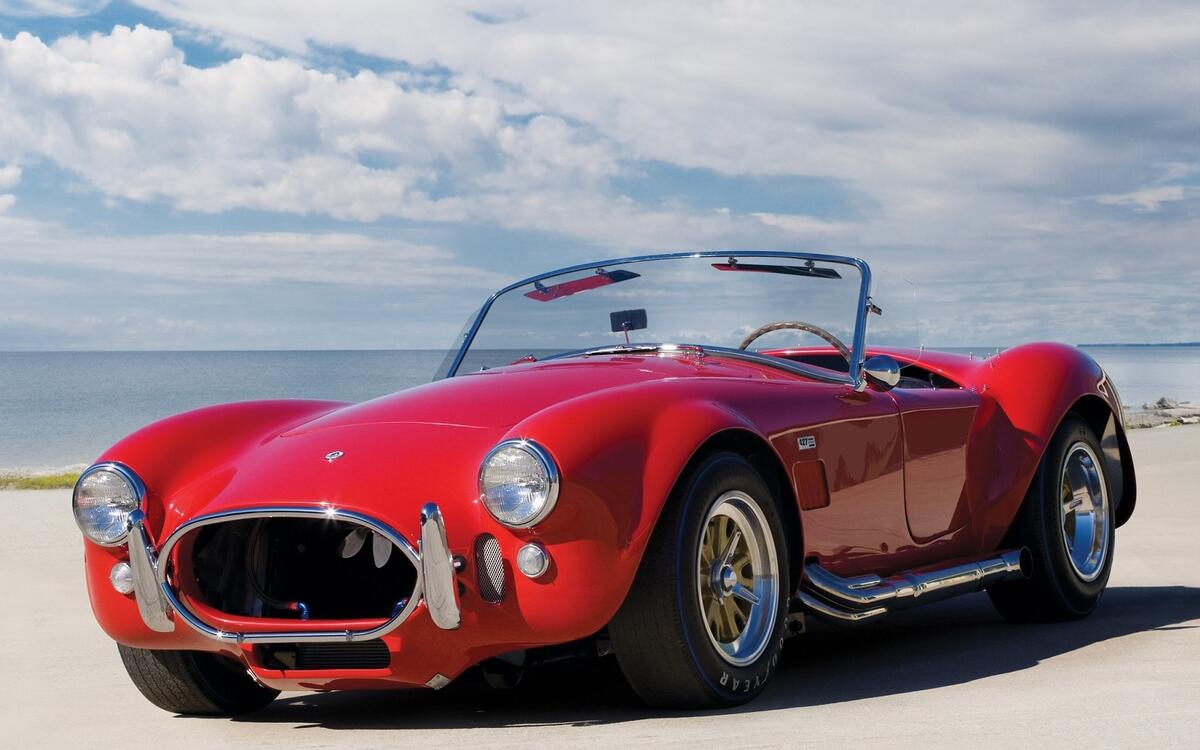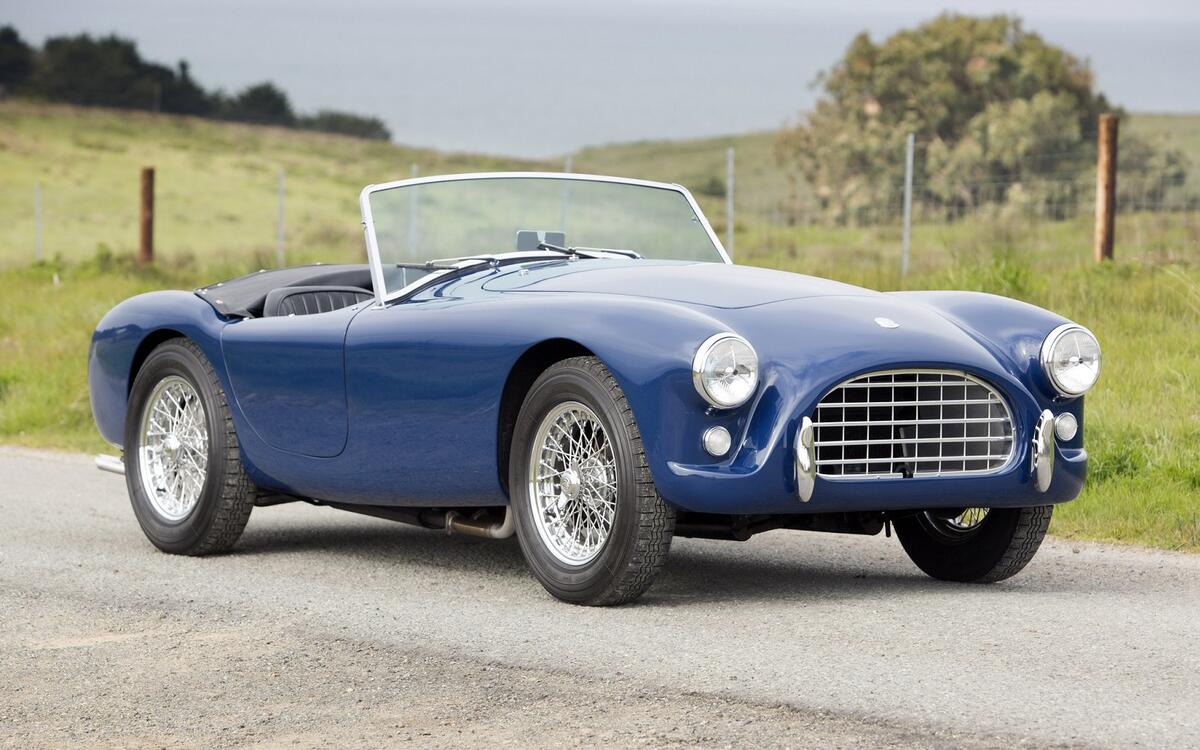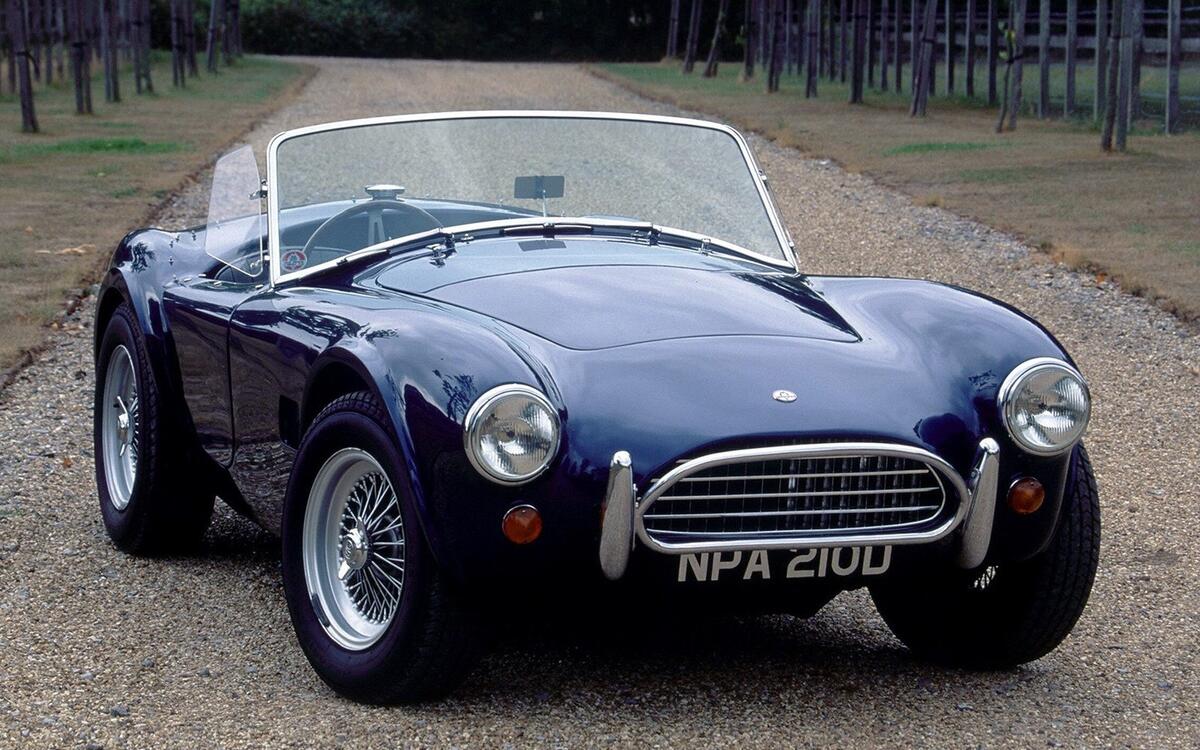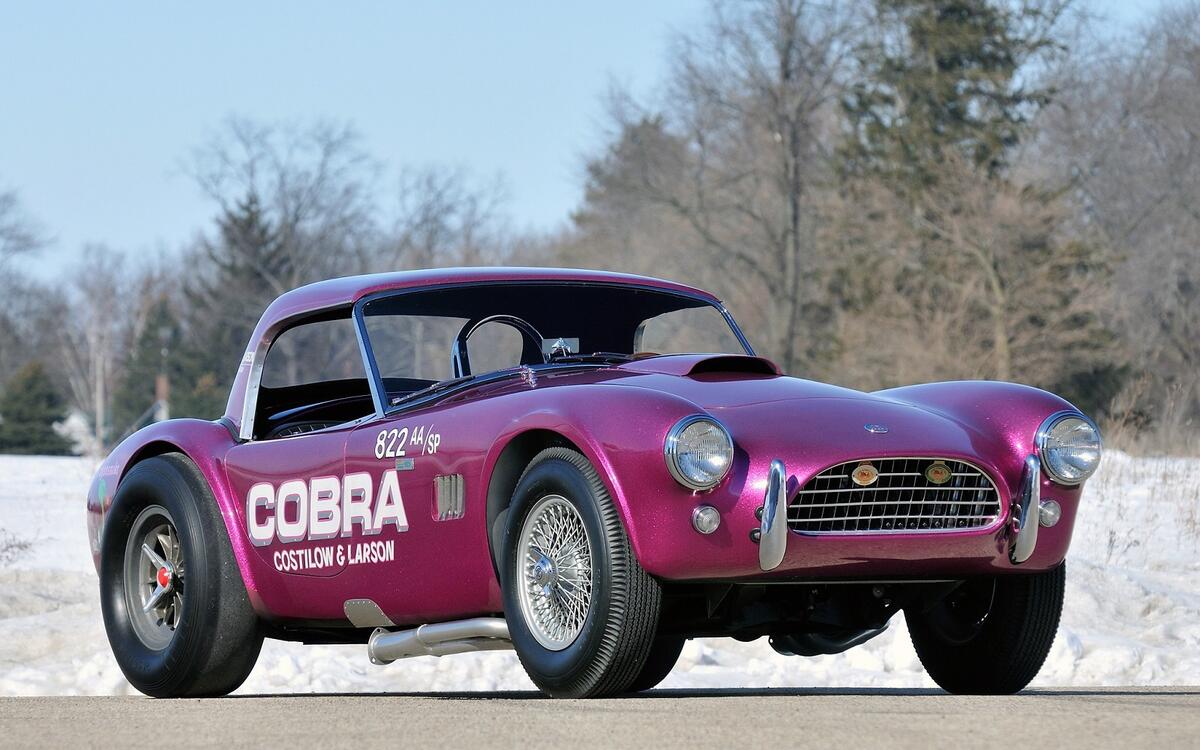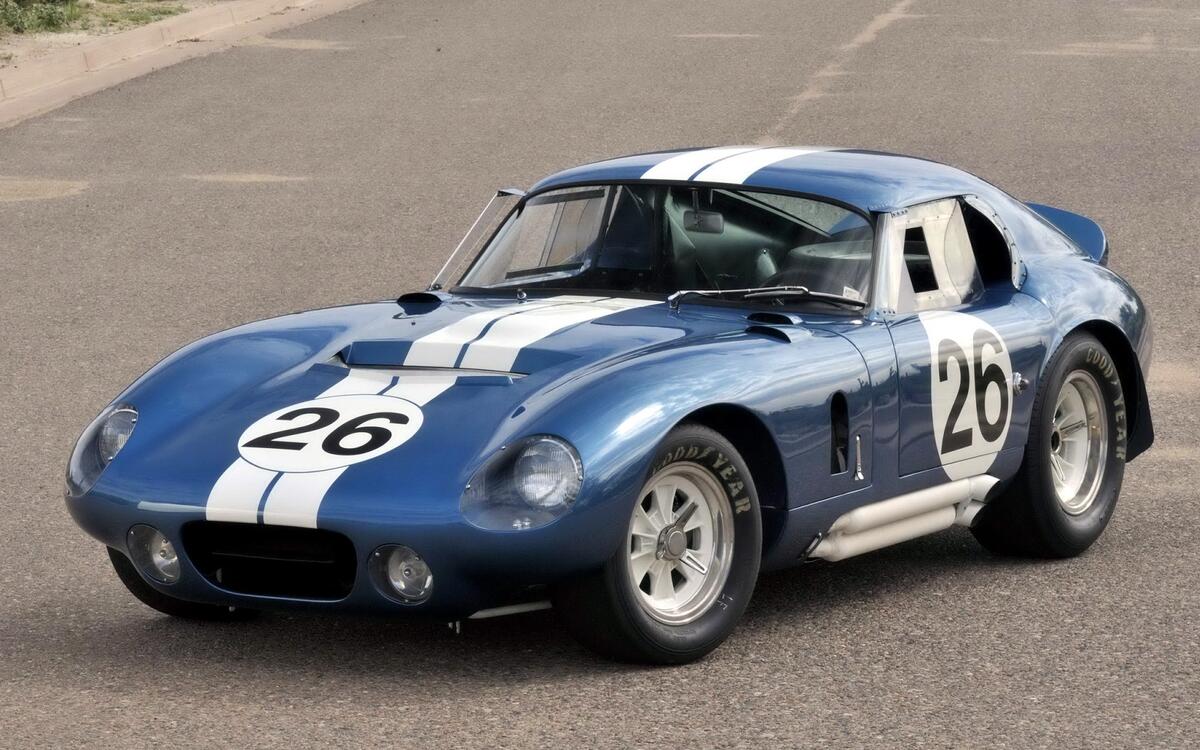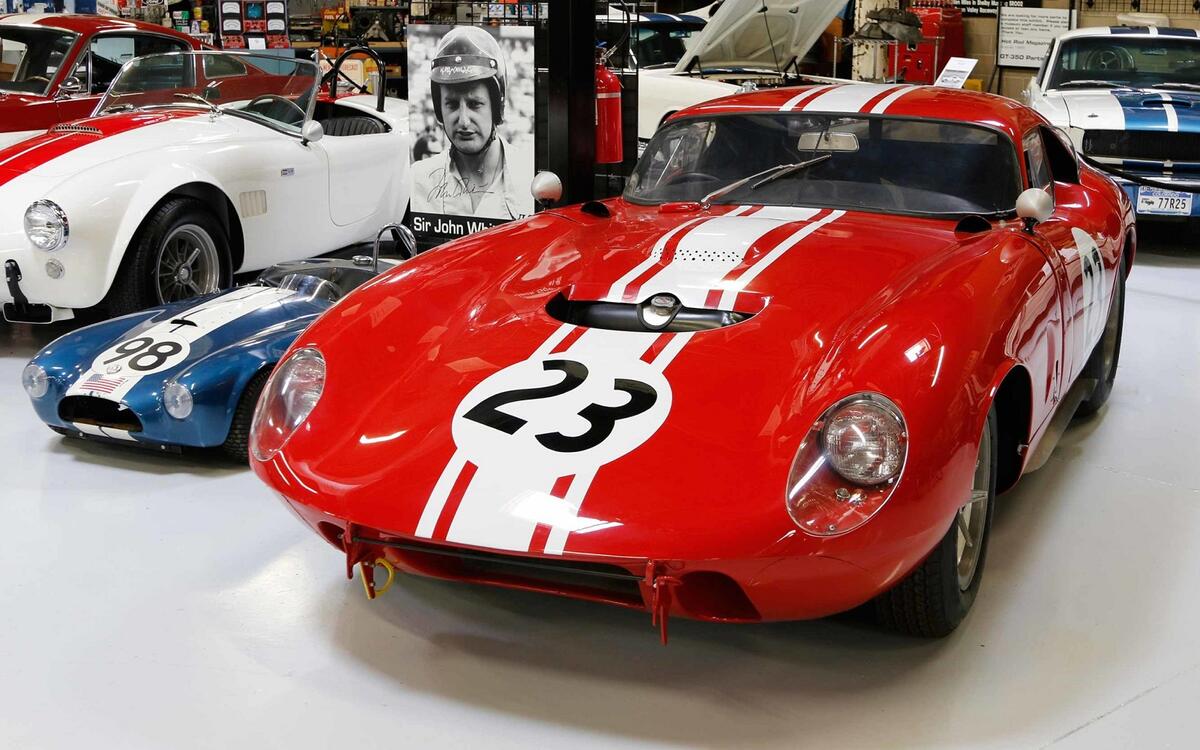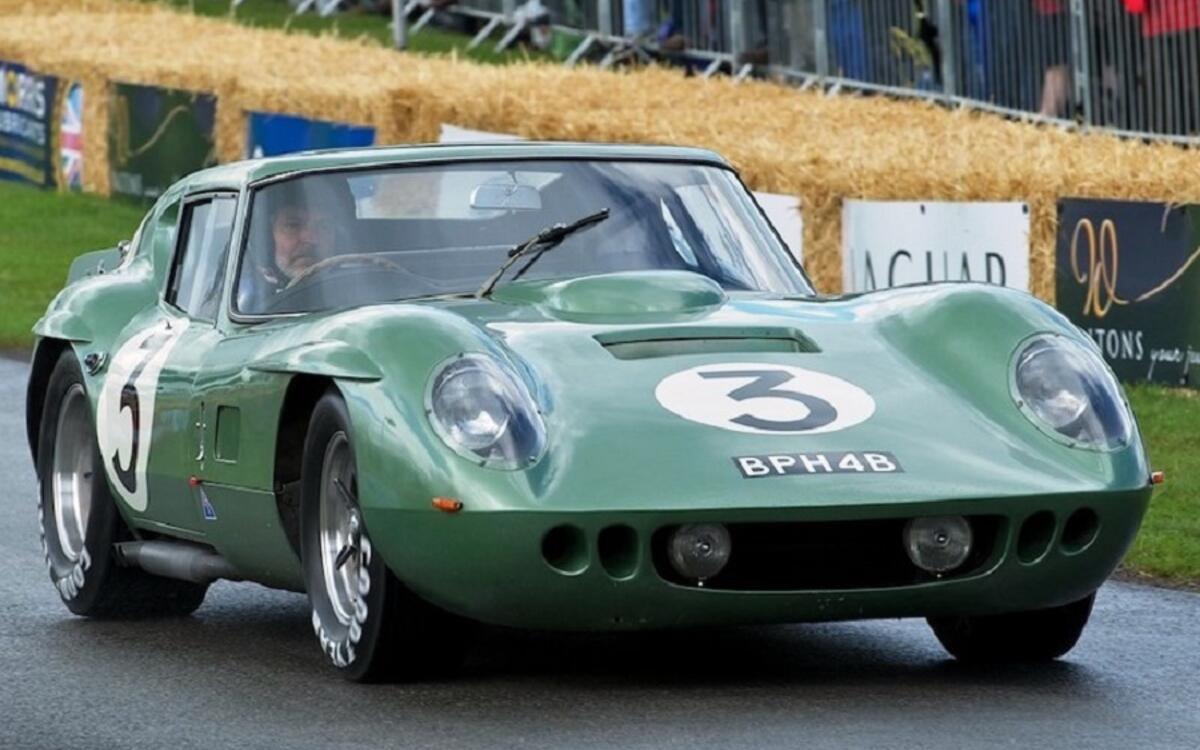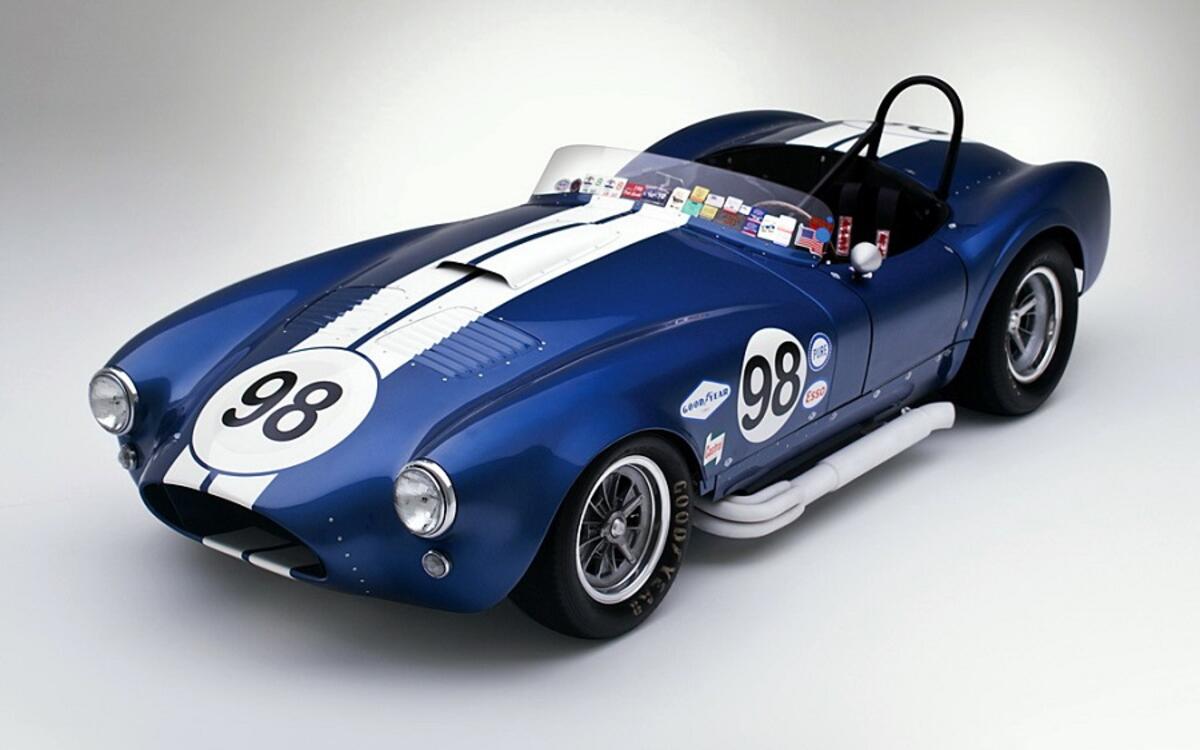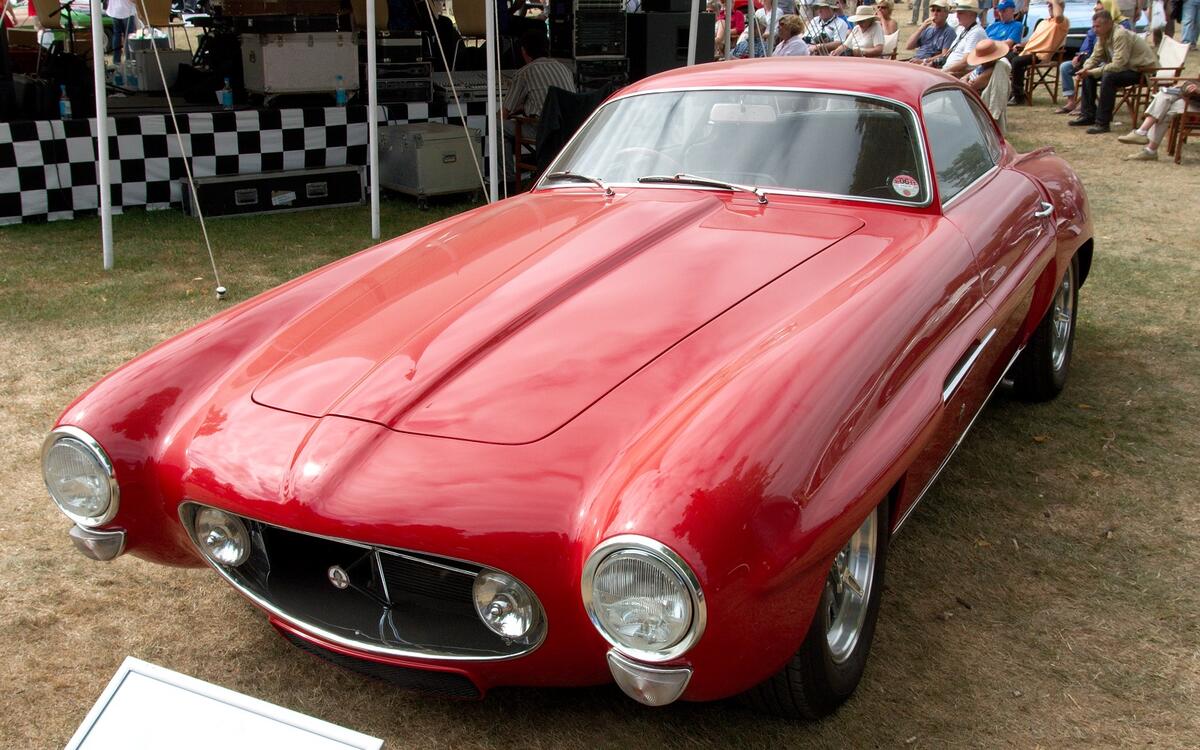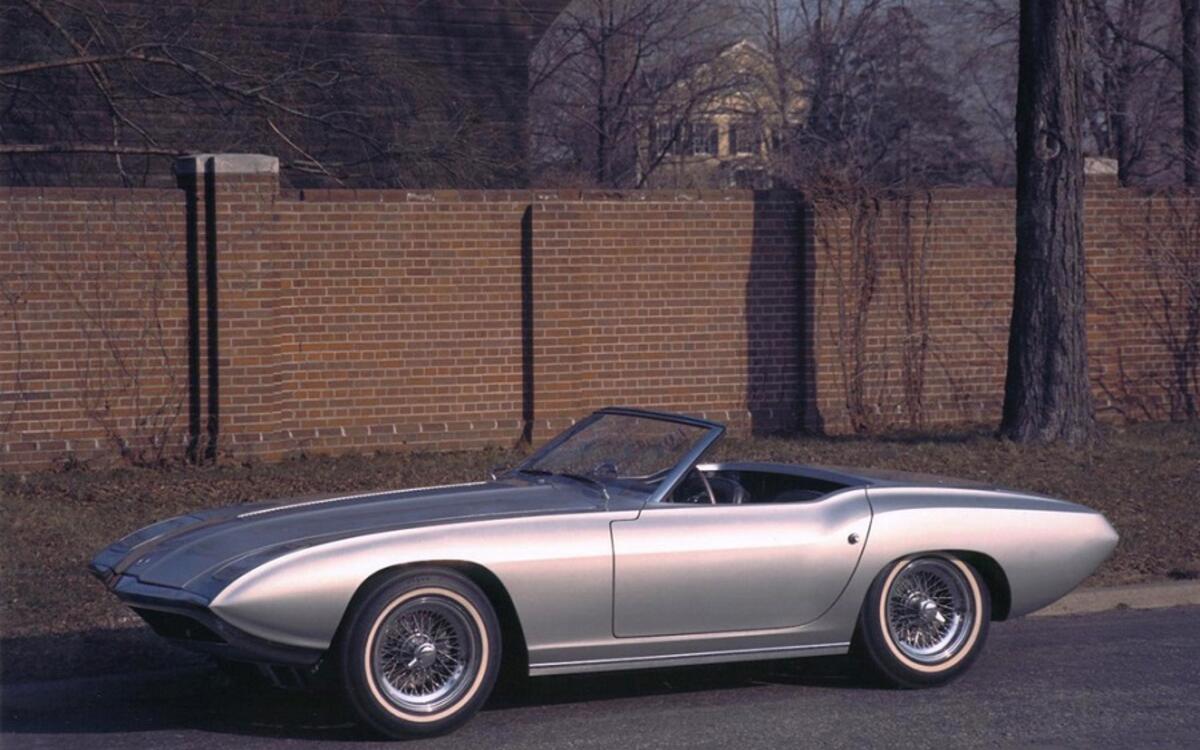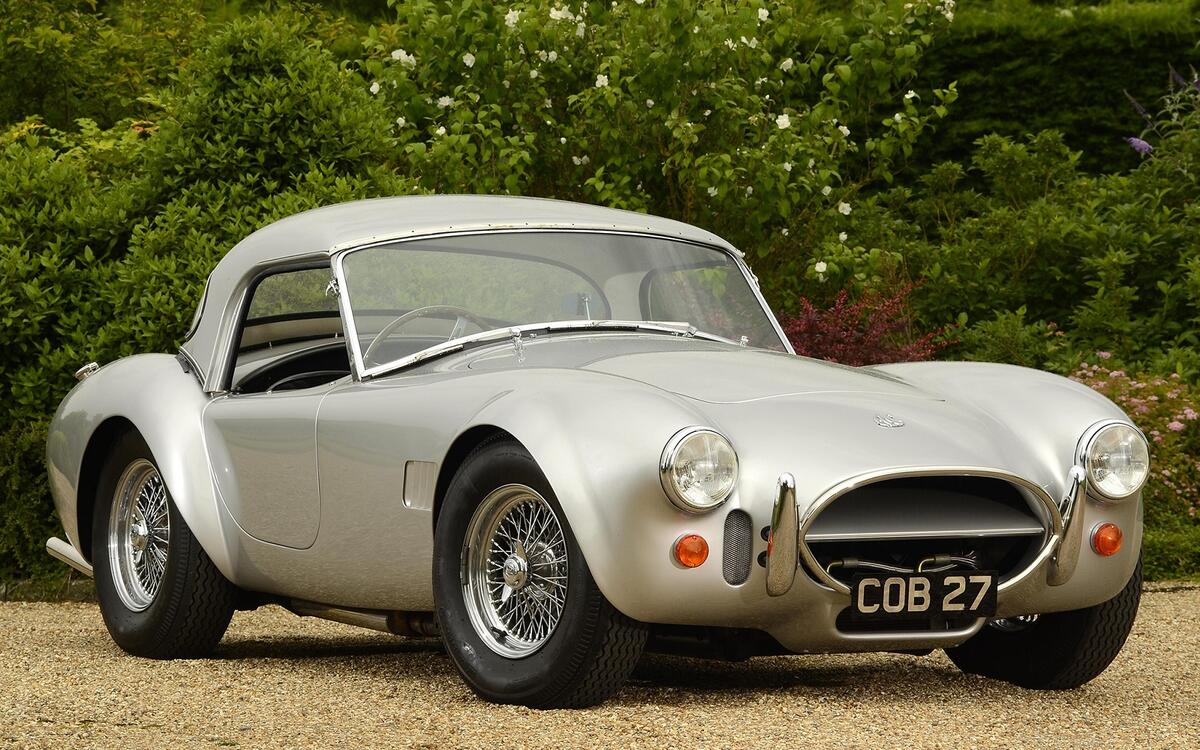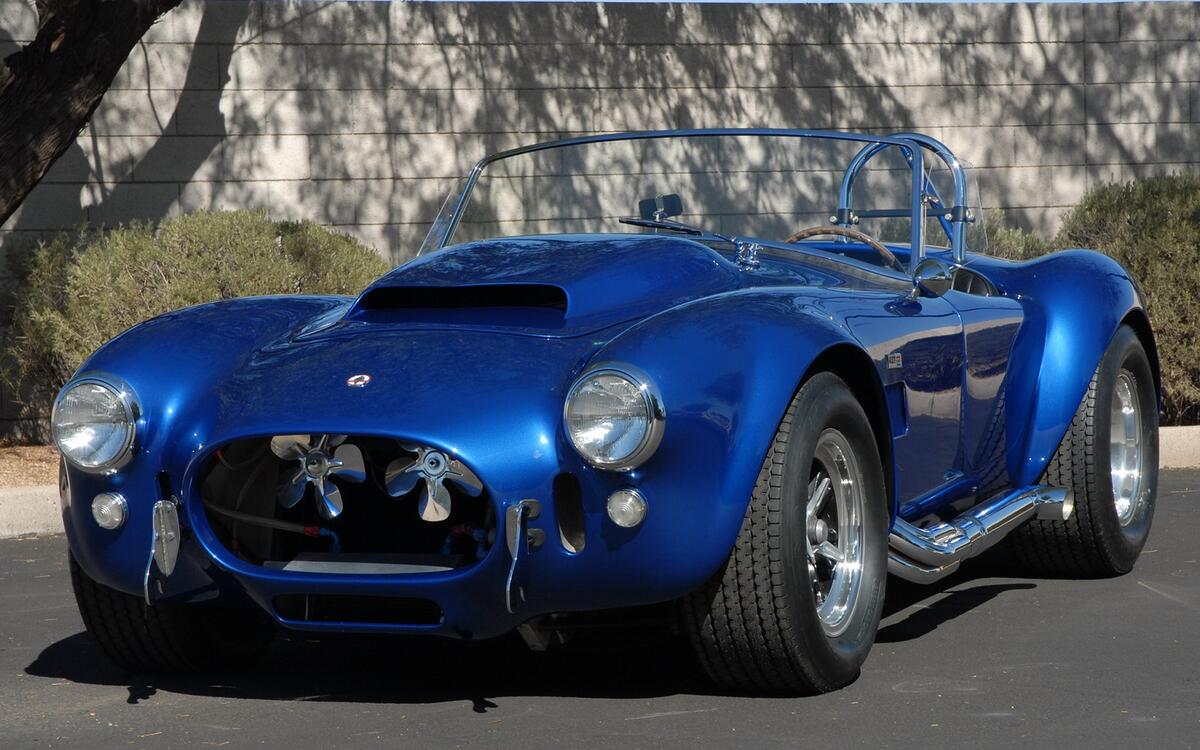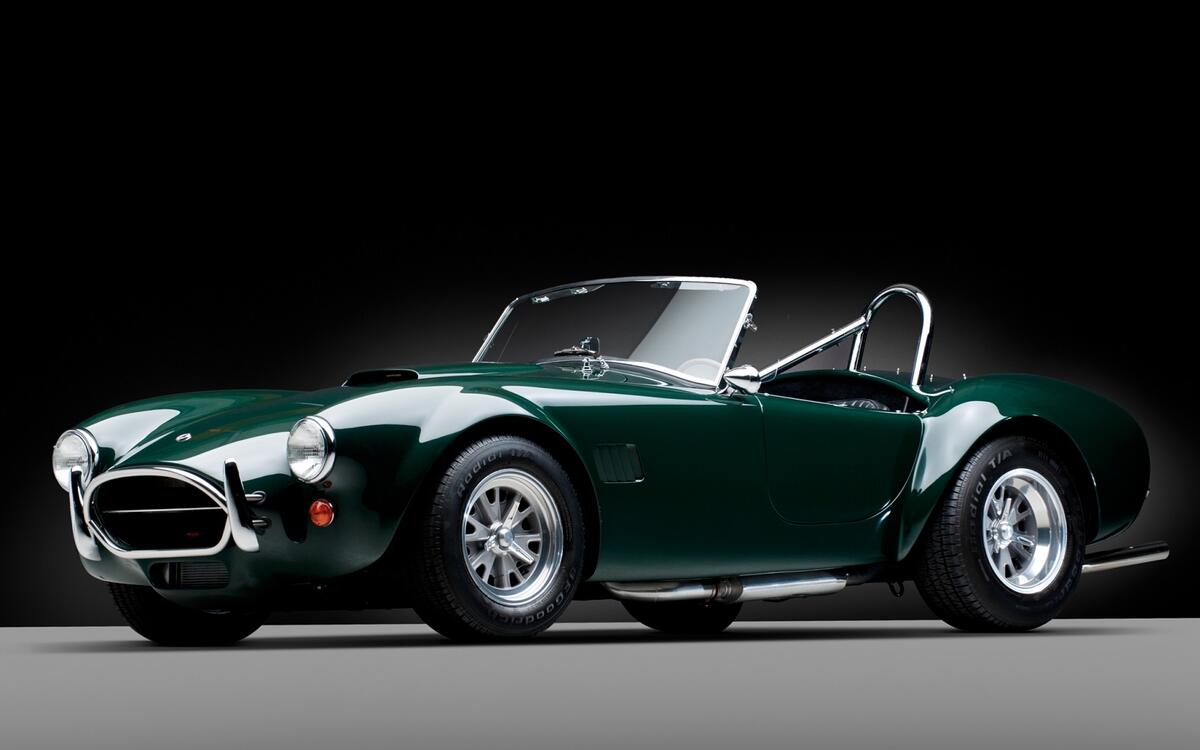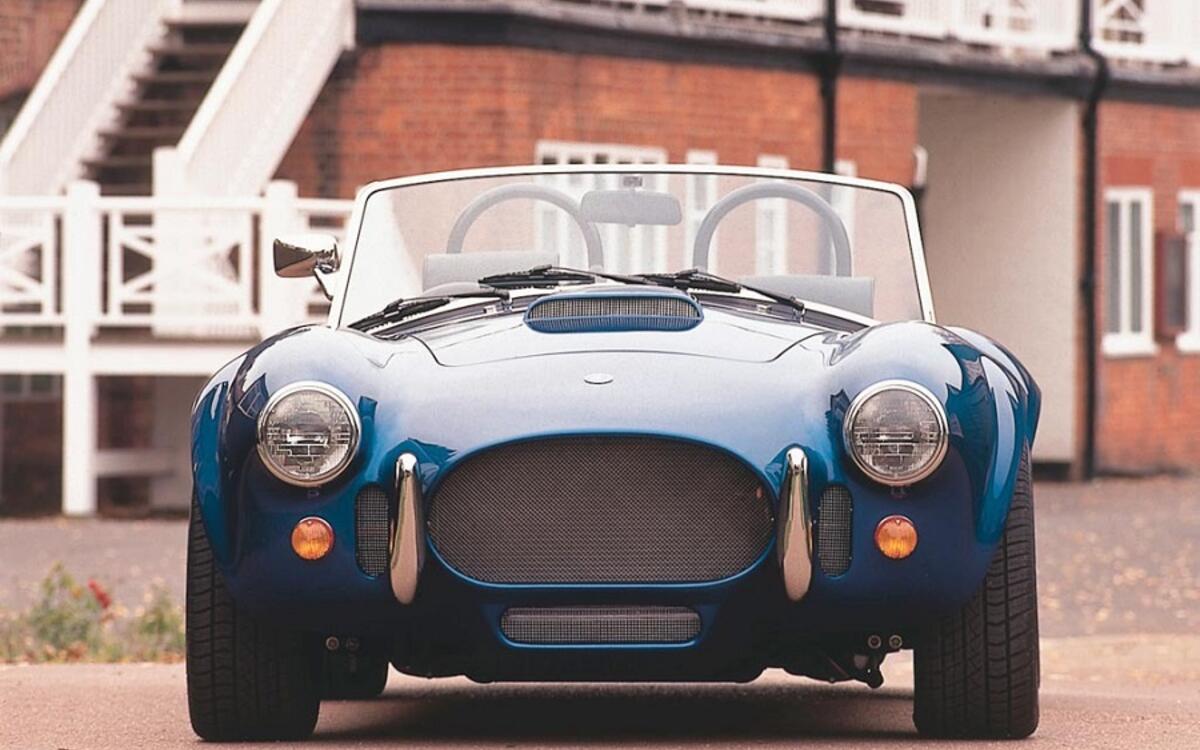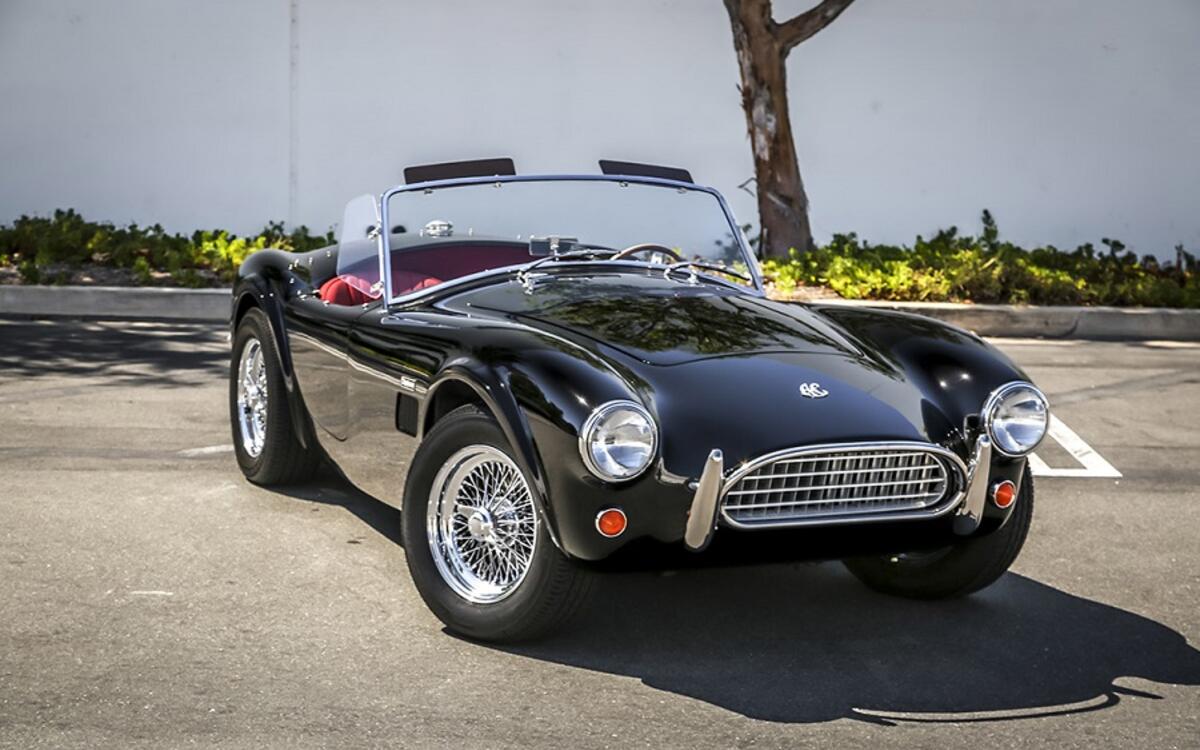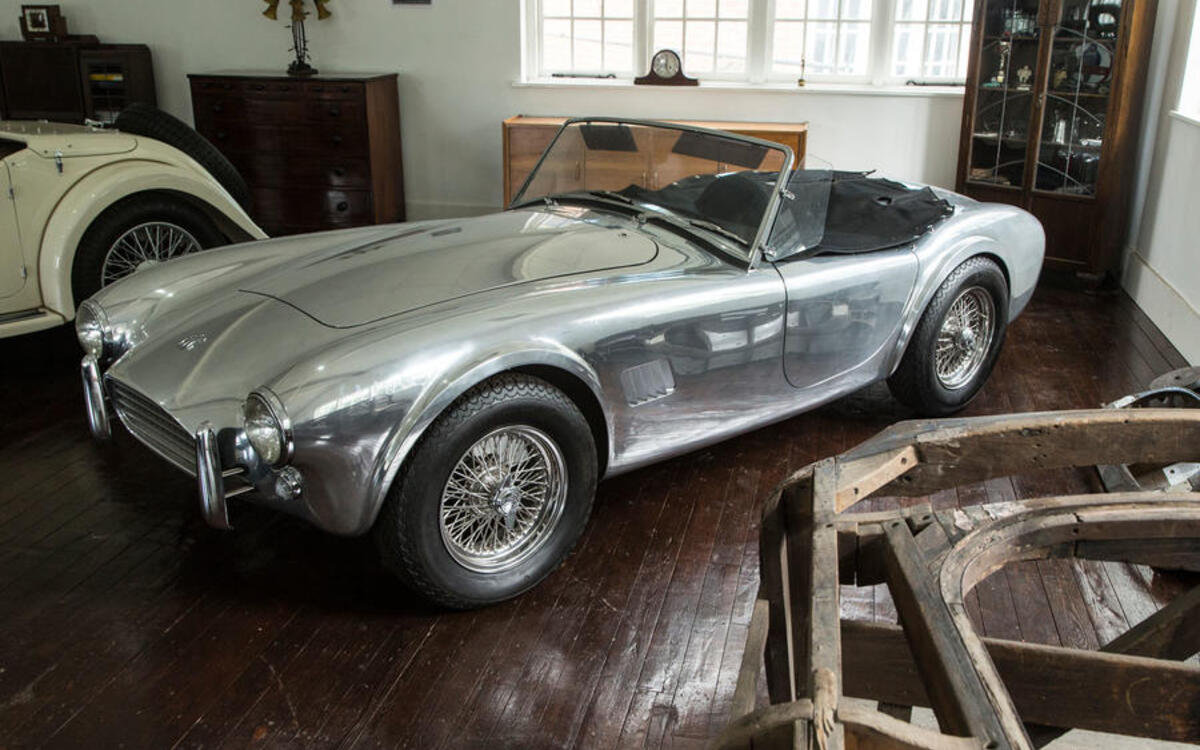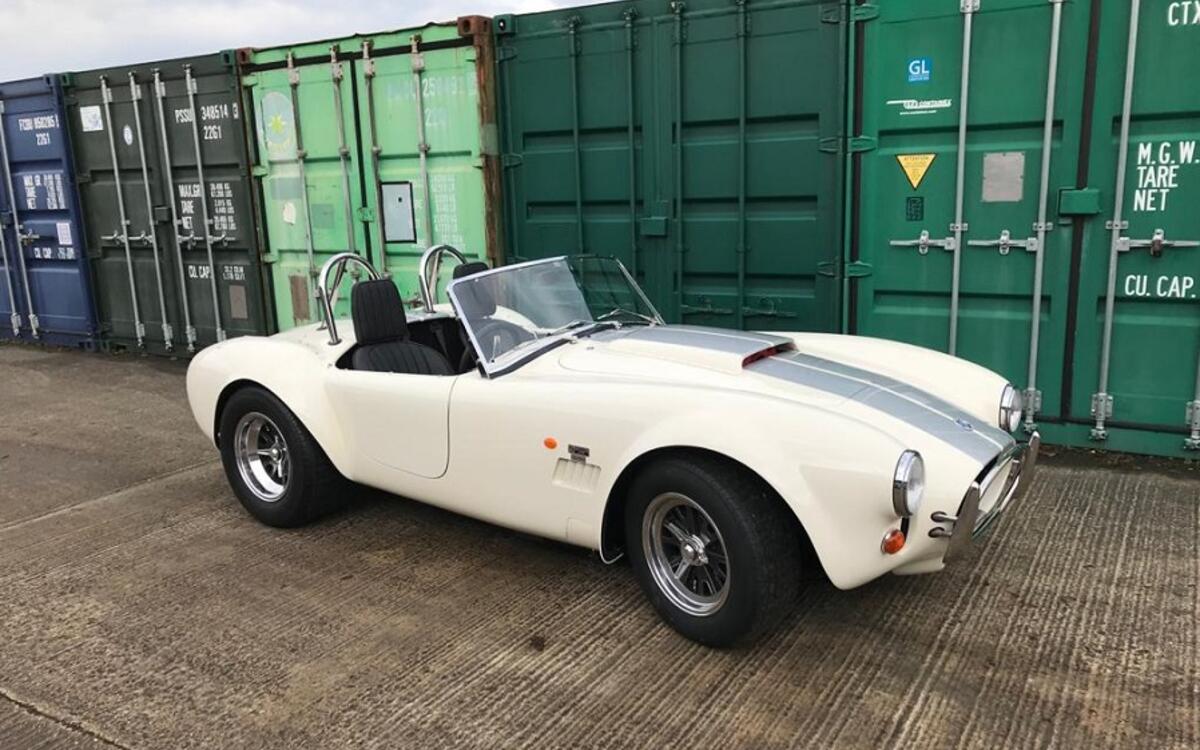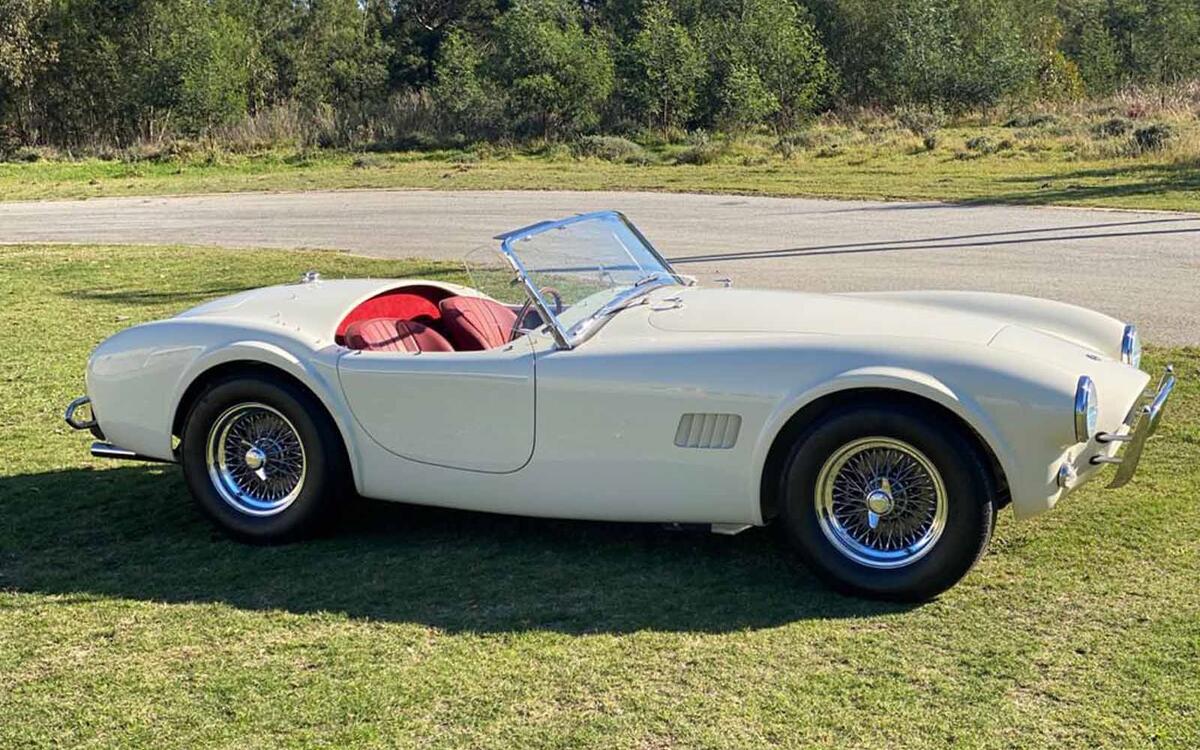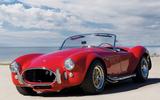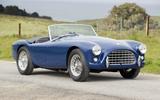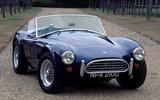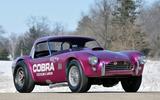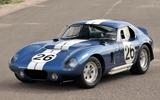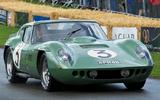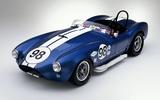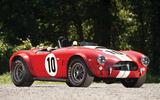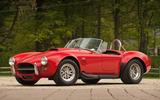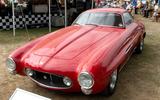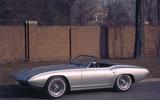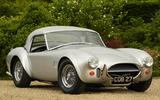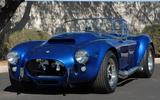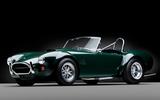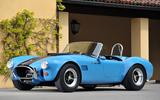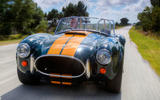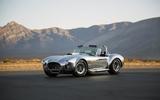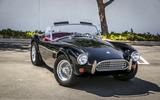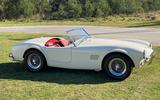 Slide of
Slide of
Legendary or notorious, the Cobra is a sports car that has always demanded attention.
It’s been around in many forms since 1962 and was very nearly powered by Chevrolet engines if it wasn’t for that company’s concern about the Cobra rivalling its own Corvette.
Chevy’s loss was Ford’s gain and the Cobra continues to grab headlines and imaginations around the world. Here’s the history of the Cobra up to the present in chronological order:
 Slide of
Slide of
Ace 3.6 (1962)
This unique car was where the whole Cobra legend started. It was built after Carroll Shelby approached AC with the idea of fitting a V8 engine into the British firm’s delicate Ace roadster. As the Ace was coming to the end of its life with straight-six engines, the plan made sense and AC agreed.
The first chassis needed little reworking to fit the proposed all-new 3.6-litre (221ci) Windsor V8 from Ford. Only the steering box had to be repositioned to accommodate the width of the V8. At the rear, a new Salisbury differential, which was the same as the Jaguar E-type’s, was used to cope with the increase in power and torque. After testing the engine and four-speed manual gearbox in the UK, the chassis and body, minus the drivetrain, were shipped to the USA for Shelby to carry out more testing.
 Slide of
Slide of
260 (1962)
When Carroll Shelby and his team got their hands on the first chassis from AC, they fitted it with an improved 260ci (4.3-litre) version of the Windsor V8. With 260bhp on tap, the newly christened Cobra was immediately tried out on the streets of Los Angeles to bait Corvette drivers.
Weighing a claimed 916kg, the Cobra could accelerate from 0-60mph in 5.5 seconds and hit 145mph. Those ‘Vettes didn’t stand a chance and Shelby’s instinct was proved right about mixing the British sports car with American muscle. Few changes were needed to turn this car into the production model other than relocating the petrol filler and the brake discs were repositioned from next to the differential to an outboard position for easier servicing. The first 75 Cobras were sold in this form, including some with the larger 289ci (4.7-litre) engine.
 Slide of
Slide of
289 (1963)
Soon after the 260ci (4.3-litre) Cobra stunned the sports car-buying public, Shelby made full use of Ford’s catalogue to upgrade the engine to a 289ci (4.7-litre) unit. Further improvements arrived for the Mk2 and included a switch to rack and pinion steering for better accuracy, with the rack borrowed from the MGB Roadster. The steering column was also upgraded with one from the Volkswagen Beetle.
These changes added to the Cobra’s weight, which now came in at 1050kg, but the 289 V8’s 275bhp was more than up to countering that. As a result, the 0-60mph time fell to 4.4 seconds, though top speed dropped to 138mph. A total of 580 Mk2 Cobras were built.
 Slide of
Slide of
Dragon Snake (1963)
The Dragon Snake is among the rarest and most sought-after of all Cobra models. Shelby knew drag racing was hugely popular in the USA, so he came up with a package to make the Cobra an ideal competition car in National Hot Rod Association events. The pack included improved Koni shock absorbers, Goodyear slick tyres, a different rear differential for improved acceleration, and air scoop on the bonnet. The battery was moved behind the passenger seat for more weight over the rear wheels and a roll bar was installed.
The engines came with alloy cylinder heads and the internals were carefully balanced. Shelby produced six factory 289 Dragon Snakes and a sole 427 version, though several customers bought the pack to fit to their own cars.
 Slide of
Slide of
Shelby Daytona Coupe (1964)
Carroll Shelby had won the Le Mans 24 Hours in 1959 with Roy Salvadori in an Aston Martin. Now, he wanted to win the event with his own car. Earlier racing Cobras had varied success, with the car’s aerodynamics holding it back from beating the slippery Ferrari 250 GTO. So, Shelby came up with the Daytona Coupe based on a standard chassis. Power came from a 385bhp version of the 289 engine and six cars were built.
At Le Mans in 1964, the Daytona Coupe ran well and won its GT class with Dan Gurney and Bob Bondurant driving. They finished fourth overall in the race but an outright victory eluded Shelby.
 Slide of
Slide of
Willment Cobra Coupe (1964)
When Carroll Shelby refused to sell a Daytona Coupe to British team owner John Willment, the Brit decided to build his own on a Cobra chassis he had lying spare. Willment had already run a Cobra, with the famous registration 39PE, so he knew the standard car was not sufficiently aerodynamic.
Using drawings from Shelby, the Willment car looked very similar the Daytona Coupe but it had a lower roof. Other differences were the Willment car used Lucas electrical components and Girling brakes. It was finished in Willment’s favoured red with white stripes and it ran well in various endurance races, but it never made it to Le Mans.
 Slide of
Slide of
A-98 Le Mans Coupe (1964)
While Shelby was working on his coupe to race at Le Mans, AC Cars in Britain were also developing their own fastback to compete in the French classic. Called the A-98, it was a one-off project and qualified for the 1964 Le Mans race. It relied more on its better aerodynamics than the Daytona Coupe to match lap times as the British car made do with 355bhp to the US rival’s 385bhp.
However, the biggest problem the A-98 faced was sabotage when someone stuffed newspaper into the fuel tank during the race. The car retired after seven hours, but one of its drivers, Jack Sears, became the only person to drive all three Cobra-based racing coupes.
 Slide of
Slide of
390 Big Block Flip-Top (1964)
The 390 Big Block was the first dabble with larger engines for the Cobra. However, this 390ci (6.4-litre) motor was no normal V8. It was an all-aluminium engine borrowed from Ford’s NASCAR program and had flip-open bodywork to make it easier to get at the mechanical components front and back. This earned it the nickname ‘Flip-Top’.
It made its debut at Sebring with Ken Miles at the wheel. The talented British driver declared the car almost undriveable. This didn’t stop Shelby from improving on the idea and Ken Sutton was enlisted to relocate the exhaust, brakes, suspension and engine. In this form, it left the competition trailing at its next outing at Nassau, but it retired soon after with brake problems.
 Slide of
Slide of
Slalom Snake (1964)
Keen to show well in auto test competition, Shelby came up with the Slalom Snake to show the Cobra was about more than just straight-line speed. To improve the handling, the two Slalom cars built had Koni shock absorbers, front and rear anti-roll bars fitted, and Goodyear Blue Streak Sports Car Special tyres.
Both cars were finished in white with red stripes and red leather upholstery. They also had seat belts fitted, along with cooling ducts for the brakes and side exhausts to give better ground clearance on rougher autocross courses.
 Slide of
Slide of
427 (1965)
The 427 of 1965 is the Mk3 Cobra and the one most people think of when contemplating the car. It’s bulging haunches and extended front wings, along with the optional side exit exhausts are the obvious clues to this model, but there are many other distinguishing features. Not least of these is the 427ci (7.0-litre) V8 big block motor that replaced the 289. With 425bhp, the 427 could hit 164mph and it was the fastest accelerating road car in the world with 0-60mph in 4.2 seconds.
Underneath, there was yet more to the revisions for the 427 with a new chassis, coil spring suspension all round, and a wider front air intake to feed cool air to the radiator. You could also order an S/C semi-competition model with 485bhp and 185mph top speed.
 Slide of
Slide of
Willment Cobra 427 Ghia Coupe (1965)
After his experiment with a racing coupe based on a Cobra, John Willment turned his attention to a road car project. As the owner of the UK’s largest Ford dealership at the time, Willment was fortunate enough to have a 427 Cobra chassis handy. Fancying a road car, he married this rolling frame with the abandoned body of a Fiat 8V with coachwork by Ghia. This car was known as the Supersonic in Fiat form but became known as the Willment Cobra.
Power came from a Holman and Moody race-prepared 427 engine with twin four-barrel carburettors. Willment lost interest in the car before it was finished, but it was later completed and still exists today.
 Slide of
Slide of
Ford XP Cobra (1965)
Also known as the Bordinat Cobra, the Ford XP Cobra was a one-off produced by Ford on a 427 chassis. The reason for this was Ford didn’t think a great deal of fit and finish of the cars built by Shelby and it wanted a car that would better chime with its mainstream models.
The XP Cobra followed the earlier Cougar II concept and was built by Ghia in Italy. It was a roadster with a removable hard-top and was shown to the public on a few occasions, but it then disappeared and rumour had it the chassis had been reskinned with a regular Cobra body.
 Slide of
Slide of
289 Sports (1966)
Ford bought the rights to the Cobra name in the mid-1960s and this left AC unable to use the famous badge on the cars it produced in the UK for domestic and European buyers. AC had also carried on building the narrow-hipped 289-style of body even when Shelby had moved to the 427 shape, so it made sense to call the British model a 289 Sports. The 289 Sports was also built with the 427’s flared arch bodywork for some models and it also enjoyed the all-round coil spring suspension set-up.
While all of this meant little to customers who continued to call the car a Cobra, it placated Ford that AC removed all snake badging from its cars. In any case, the 289 Sports still used a Ford V8 engine, though sales were modest with just 27 sold between April 1966 and February 1969.
 Slide of
Slide of
Super Snake (1966)
‘The Cobra to end all Cobras’ was the modest claim for the Super Snake. To achieve this, Shelby took a 427 S/C that had been used for a European promotional tour and made it road legal with the bare minimum of exhaust silencers, windscreen and bumpers. However, the race engine remained and it was enhanced with twin Paxton superchargers. The result was a claimed 800bhp.
Even if that power output was a bit of Shelby spin, the reality was the Super Snake could breeze past any other performance car in a straight line. A second Super Snake was built, but it ended up in the Pacific Ocean when the throttle stuck open.
 Slide of
Slide of
Autokraft MkIV (1982)
The Cobra might have been out to pasture since the late 1960s, but British firm Autokraft saw its potential in the 1980s. For 1982, Brian Angliss’ company took on the licence to build the AC Cobra. Largely similar to the 427 in shape and design, the Autokraft machine had a slightly reshaped body to afford more comfort. It also had independent suspension, a five-speed manual gearbox, limited slip differential and improved brakes.
Power for the MkIV came from Ford as per the originals, but this was a 302ci (4.9-litre) engine producing a relatively mild 250bhp. It was still good for 0-60mph in 5.2 seconds and 135mph. Angliss’ faith was repaid with steady sales of those who wanted a genuine Cobra but had missed the boat with an original and around 480 MkIVs of all types were produced up to 1996.
 Slide of
Slide of
Lightweight (1990)
Under Autokraft’s stewardship, a Lightweight Cobra model was introduced to appeal to those who might have bought an S/C in the 1960s. Weight was reduced by 120kg to 1070kg and power for the 302ci (4.9-litre) V8 was increased to 370bhp. The engine featured alloy cylinder heads, Holley four-barrel carburettor, and the catalytic convertors were removed to make the exhaust more free flowing.
Unveiled at the 1990 Geneva Motor Show, the Lightweight found a handful of eager buyers in Europe, but it didn’t meet US standards, so its market was limited.
 Slide of
Slide of
Superblower (1997)
A new owner for AC Cars arrived in 1996 with Pride Automotive. It quickly introduced two new models and the Superblower was the range-topper. With a supercharged 302ci (4.9-litre) V8, it delivered a surprisingly lazy 320bhp. It was not the sales star that had been hoped for and only 22 were made.
However, Pride tried another tack with a turbocharged model called the 212 S/C that used a twin-turbo 3.5-litre Lotus V8 borrowed from the Esprit. Again, it failed to find favour and only two were built.
 Slide of
Slide of
Carbon Road Series (1997)
The CRS (Carbon Road Series) seemed like a good route into modern Cobra ownership rather than choosing one of the many kit car replicas on offer. With a price tag of £38,950, it used carbon fibre for the body, had well sorted double wishbone suspension, and AP Racing brakes.
The problem was the 302ci (4.9-litre) V8 engine produced a meagre 225bhp. Even with its generous torque and 1000kg weight, it didn’t feel especially quick. From rest to 60mph took five seconds, but a more refined TVR could easily beat that. As a result, only 37 CRS were produced over a four-year period up to 2001.
 Slide of
Slide of
Shelby Heritage Cobra (1999)
Never one to miss a marketing opportunity, Carroll Shelby introduced his own take on the revived Cobra in 1999 with the Shelby Heritage Cobra. With his stamp of approval, it appeals to many buyers. Options include an aluminium body in place of the standard fibreglass one and there’s a choice of 289, 427 and Daytona Coupe bodies.
Power comes from Ford V8 engines and you can pick between 289ci (4.7-litre) and 427ci (7.0-litre). Take the bigger engine and power can be specified between 500- and 750bhp to give 0-60mph in less than four seconds. However, the basic price doesn’t include the engine, so be prepared to spend around $180,000 (£130,000) for a completed Shelby Heritage Cobra.
 Slide of
Slide of
AC Mk2 Classic (2012)
With the AC name now owned by Acedes Holdings, the company announced joint ventures in the UK, Germany and the USA to produce Cobras. The German car was set to use a Chevrolet 6.2-litre V8 and Corvette gearbox and brakes. The British-built model as the AC Mk2 Classic that took the original 289 as its inspiration.
At £67,500, it seemed reasonable value against the rising prices of original 1960s Cobras. For the UK, it was set to have Ford V8 engines, while European buyers were offered Chevrolet motors. Whichever you chose, it would be built by Hi Tech in South Africa.
 Slide of
Slide of
Mk1 260 Legacy (2016)
AC Heritage is a British company based at the Brooklands race track and it launched its limited run of nine Mk1 260 Legacy model in 2016. The half million pound price tag bought you an exact copy of the Cobra in its original form, complete with 260ci (4.2-litre) Ford V8 engine.
All of the Legacy cars were made in left-hand drive and each used a brand-new 260ci engine that AC Heritage has managed to source. The aluminium bodywork could be ordered in one of only two colours: blue or yellow. This was a tribute to Shelby who repainted the original US road test car different colours to fool journalists into thinking there was more than one car.
 Slide of
Slide of
Superblower (2020)
The Superblower name made another comeback in 2020 with the 378 Superblower MkIV from AC Cars. It uses a 6.2-litre Chevrolet V8 engine from a Corvette and adds a supercharger to deliver 580bhp. Like the original Cobra, the Superblower has a twin round tube chassis.
Prices for this modern Superblower start at £129,500, which buys you a sports car with six-speed manual gearbox, multi-link rear suspension, ventilated disc brakes. It also gets you a car with a chassis plate that reads AC Cars. The company also produces a non-supercharged 378 and the 140 Charter Edition that looks like a 289 but comes with the 350bhp 2.3-litre four-cylinder usually found in a Ford Mustang.
 Slide of
Slide of
Series 1 and 4 Electric (2020)
As well as its modern take on the Cobra theme, AC Cars has gone one further with its Series I and Series IV Electric models. They take the looks of the 289 and 427 Cobras, respectively, and use electric motors with up to 617bhp in the Series IV to give 0-60mph in 3.8 seconds.
In the Series I, power is more modest and it covers the 0-60mph dash in 6.7 seconds, with a top speed of 120mph. A 54kWh battery is used in both models and offers up to 150 miles of range.
Now nearly 50 years old, join us for a close look at the AC Cobra and its many derivatives
Advertisement

